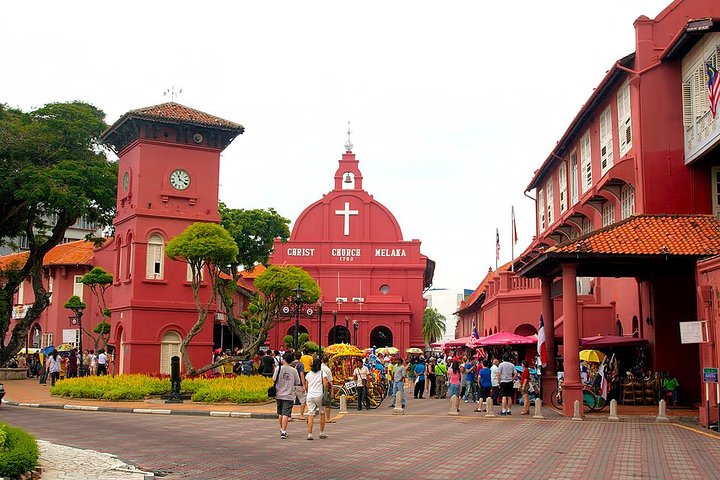Exploring Malacca: A Cultural Tapestry of Jonker Street and Temples
Drawn by the allure of Malacca’s rich cultural tapestry, I embarked on a journey to explore Jonker Street and its historic temples. What I discovered was a city where history and tradition intertwine, offering a unique glimpse into Malaysia’s multicultural heritage.
A Journey Through Time on Jonker Street
As I strolled down Jonker Street, the heart of Malacca’s Chinatown, I was immediately enveloped by a vibrant tapestry of sights, sounds, and scents. The street, bustling with life, offered a sensory overload that was both exhilarating and grounding. Antique shops lined the thoroughfare, each a treasure trove of history waiting to be discovered. I found myself drawn to a quaint little shop, its shelves brimming with artifacts that whispered stories of the past. The night market, a kaleidoscope of colors, was a feast for the senses. Street vendors called out, offering an array of local delicacies that tempted my taste buds. I couldn’t resist trying the famous chicken rice balls, a dish that perfectly encapsulated the rich culinary heritage of Malacca.
The cultural diversity of Jonker Street was palpable, a reflection of Malacca’s storied past as a melting pot of cultures. As I wandered, I marveled at the harmonious blend of Chinese, Malay, and European influences that defined the architecture and atmosphere. Each step I took felt like a step back in time, a journey through the layers of history that have shaped this remarkable city.
Temples of Tranquility
Leaving the lively chaos of Jonker Street behind, I ventured towards the serene sanctuaries of Malacca’s temples. The Cheng Hoon Teng Temple, the oldest functioning temple in Malaysia, was a masterpiece of intricate carvings and ornate decorations. As I entered, the scent of incense enveloped me, and I was struck by the profound sense of peace that permeated the air. The temple, a testament to the enduring legacy of Buddhism, Confucianism, and Taoism, offered a space for reflection and reverence.
Nearby, the Kampung Kling Mosque stood as a symbol of Malacca’s multicultural heritage. Its unique architectural design, a fusion of Sumatran, Chinese, Hindu, and Malay influences, was a visual representation of the city’s diverse cultural tapestry. As I explored the mosque, I was reminded of the importance of preserving these cultural landmarks, which serve as bridges to the past and guides for the future.
Historical Echoes at A Famosa and Beyond
My journey through Malacca would not have been complete without a visit to A Famosa, the iconic Portuguese fort that stands as a testament to the city’s colonial past. As I stood before the ancient gate, I could almost hear the echoes of history reverberating through the air. The fort, a symbol of resilience and endurance, offered a poignant reminder of the complex history that has shaped Malacca.
From there, I made my way to St. Paul’s Hill, where the ruins of St. Paul’s Church offered a breathtaking view of the city below. The church, built by a Portuguese nobleman in gratitude for his survival at sea, was a place of quiet contemplation. As I stood amidst the ruins, I felt a deep connection to the past, a reminder of the enduring human spirit that transcends time and place.
My exploration of Malacca was a journey through time, a celebration of the city’s rich cultural heritage and historical significance. Each site I visited offered a unique glimpse into the past, a reminder of the diverse influences that have shaped this remarkable city. As I left Malacca, I carried with me a newfound appreciation for the intricate tapestry of cultures that define this vibrant city, and a deep respect for the traditions that continue to thrive in the heart of Malacca.




















































